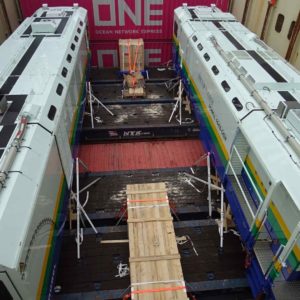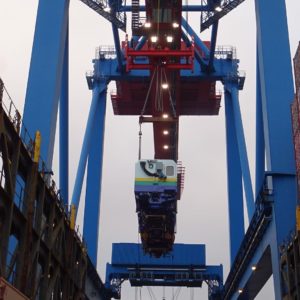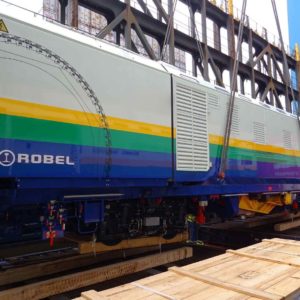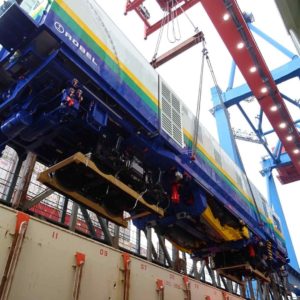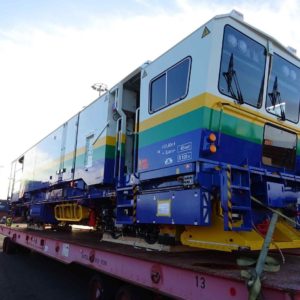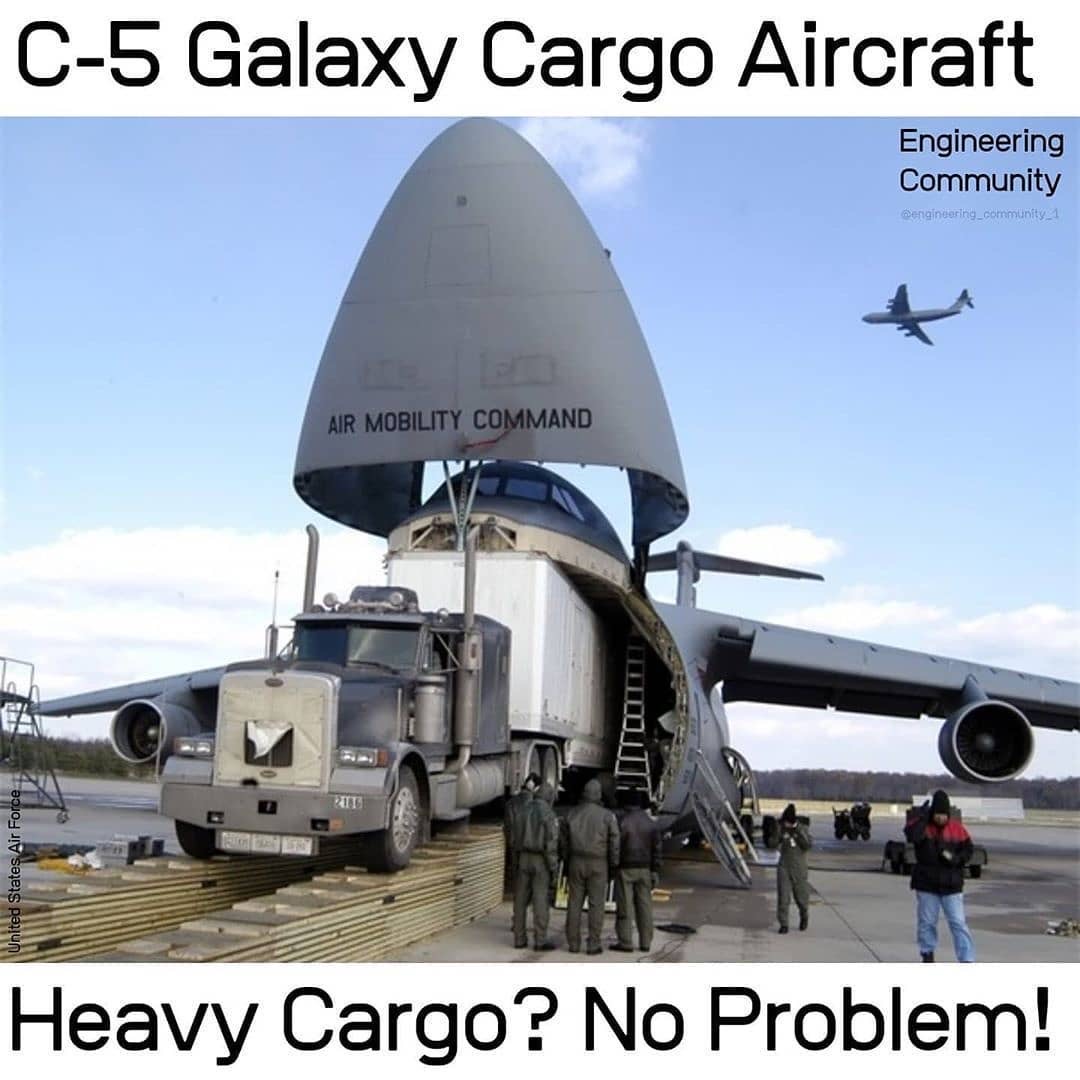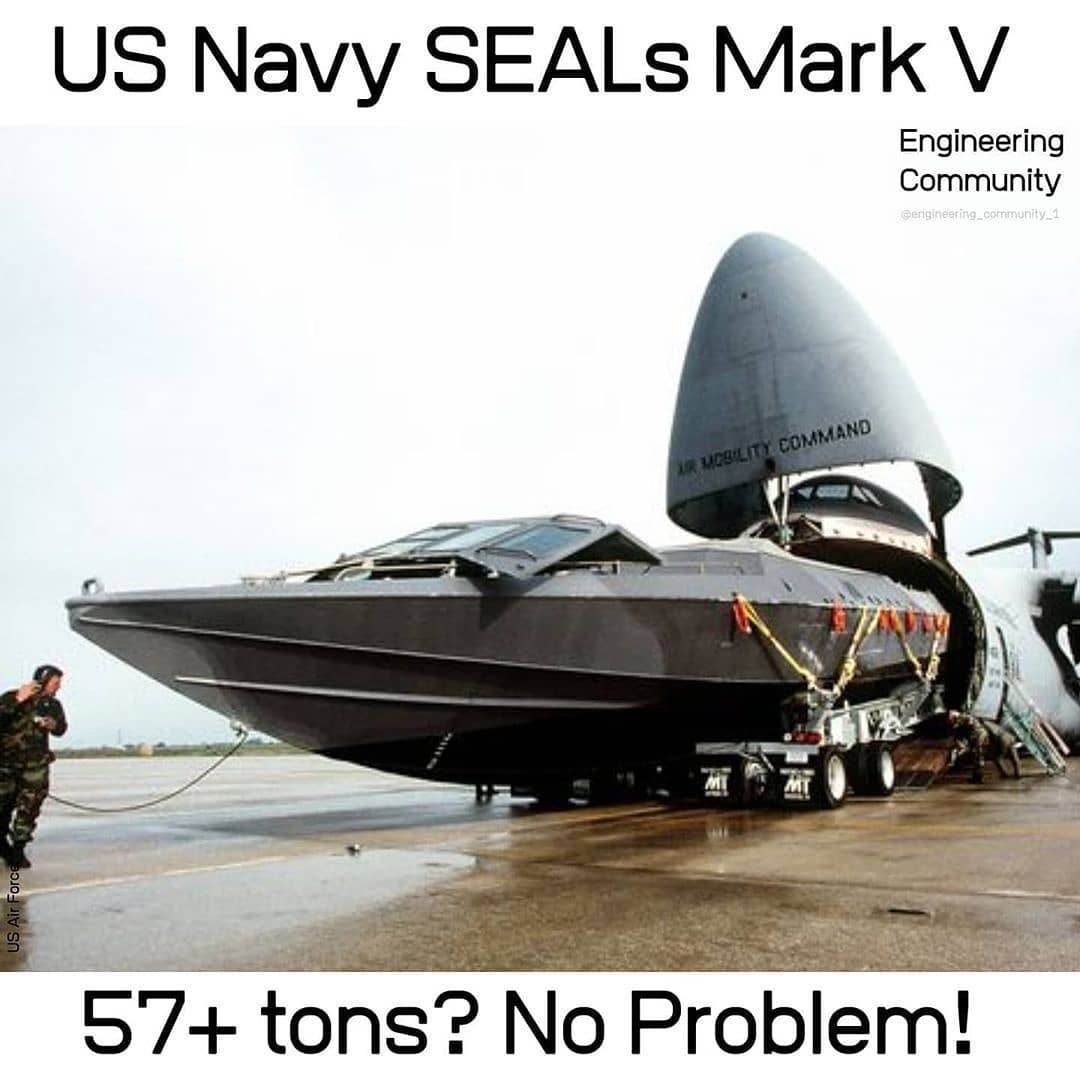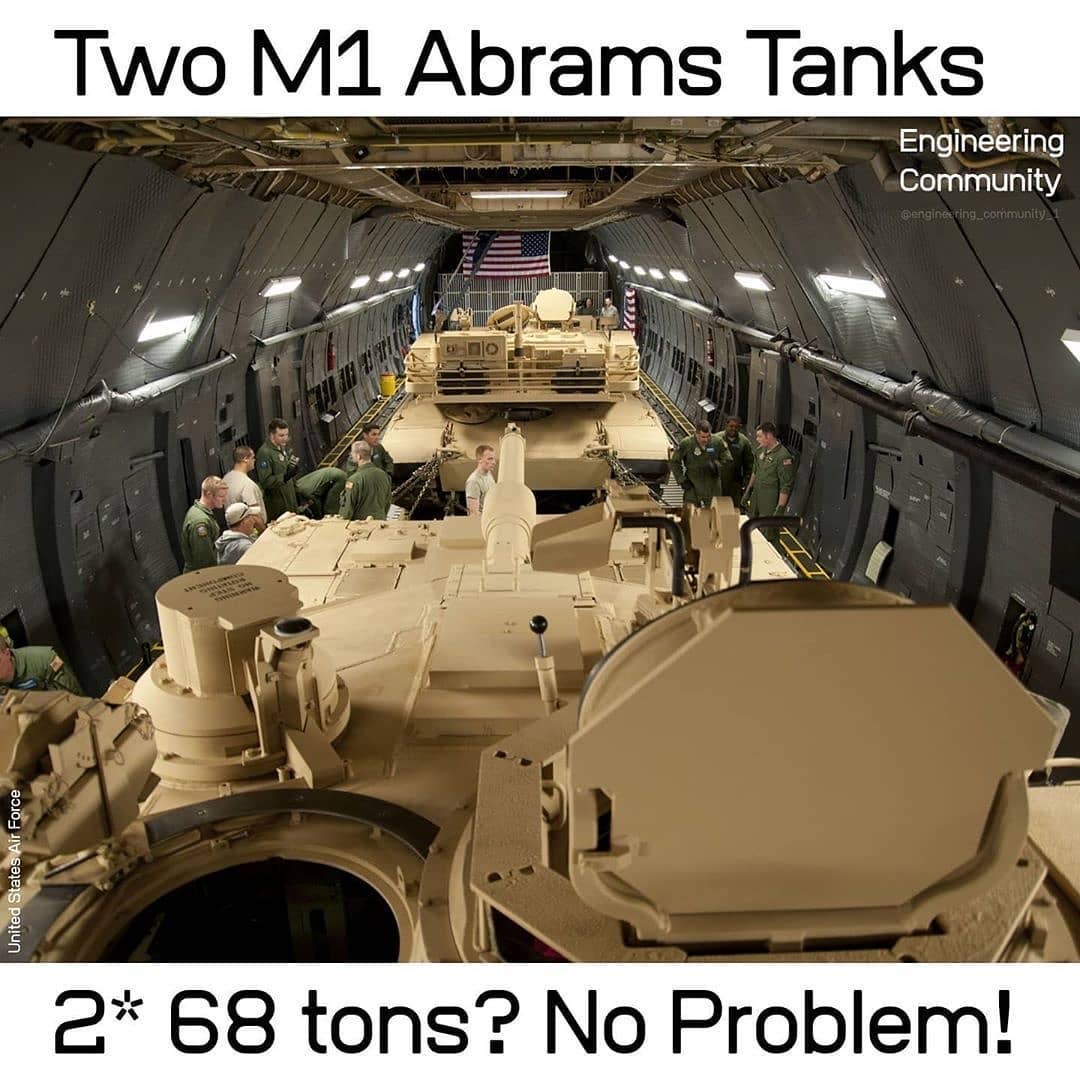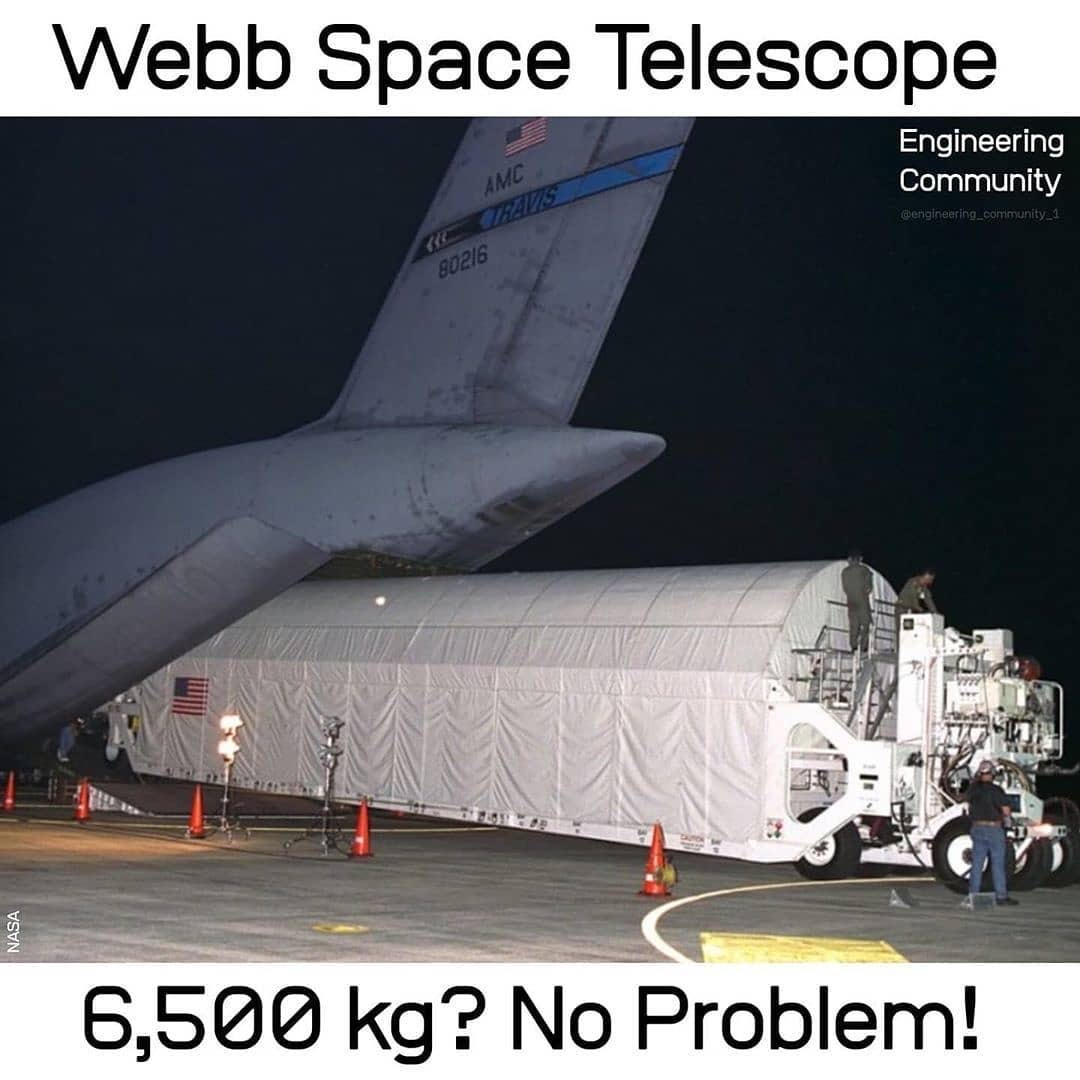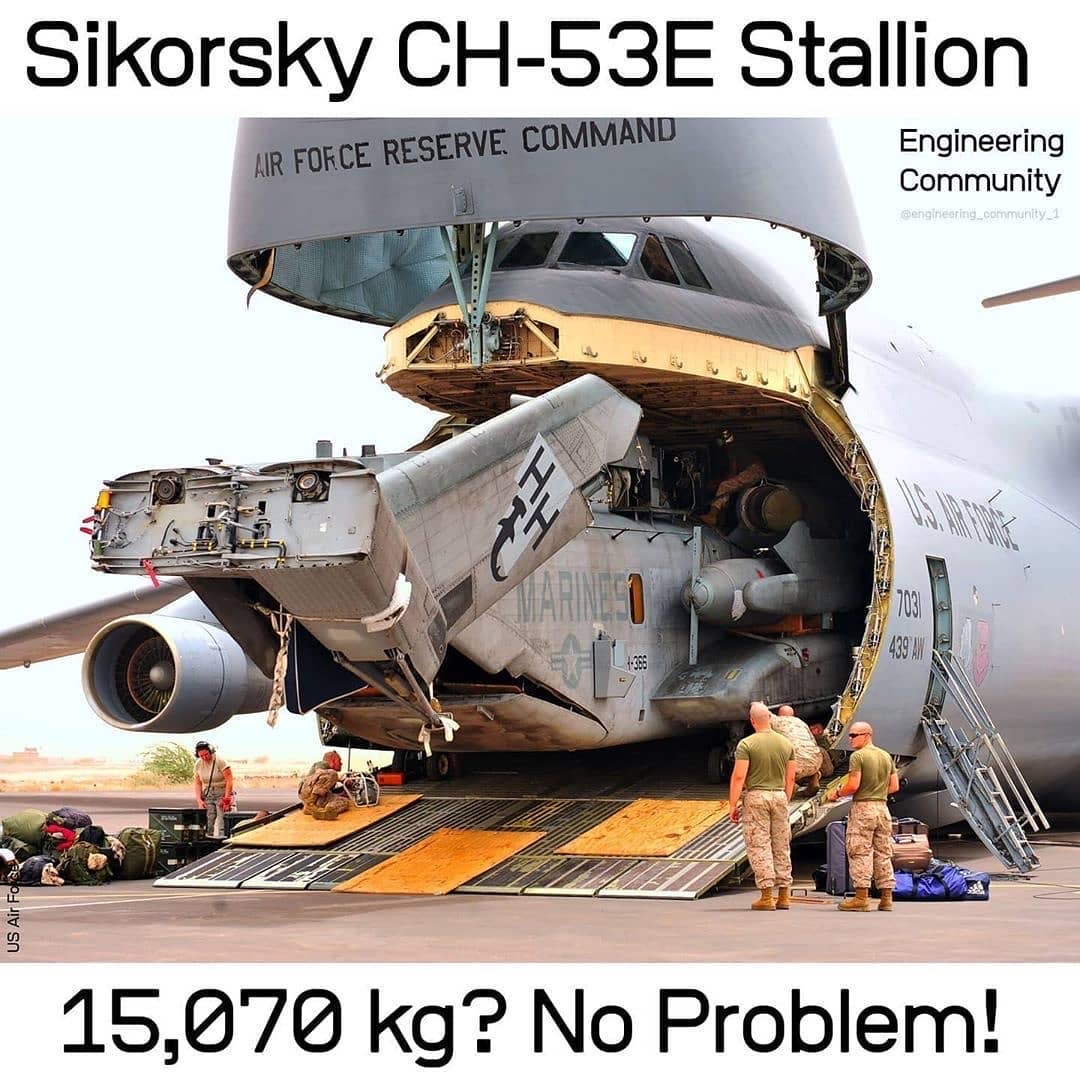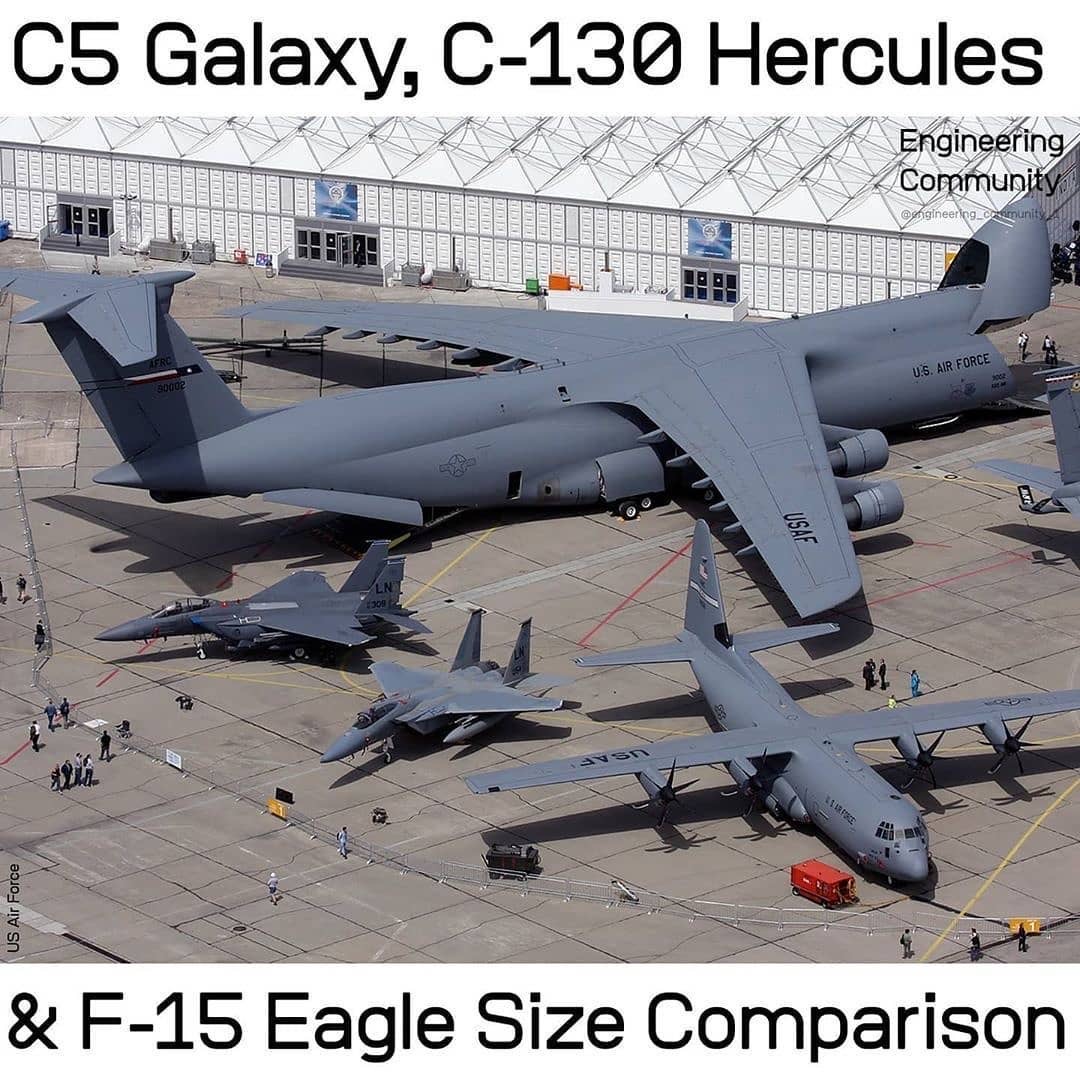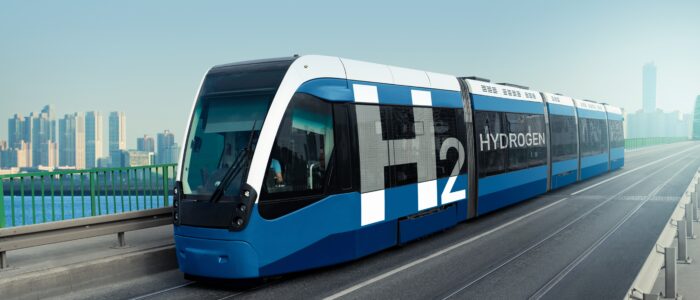
Learn About the Future of Hydrogen Power
This Yahoo Finance article highlights companies using hydrogen power, a long-term green power source:
“Hydrogen, the most common element in the universe, is all around us – highly reactive and non-polluting. When used as a power source in chemical fuel cells, the chief byproduct is simple water. Hydrogen-fueled power systems have the potential to replace a host of combustion engine applications and vehicles.”
Read more at: “The Future of Hydrogen Power Is Here — and These Stocks Are Leading the Charge“

Ocean Freight Rates from China to US Have Tripled Compared To Last Year
Due to current backlogs as a result of the pandemic, space on container ships from Asia to the US is extremely tight and rates have gone through the roof. Booking space is even more problematic and could easily take 4-6 weeks to get a booking. As a result of the high demand and tight space, eastbound transpacific ocean freight rates are now more than 3 times higher than the same period last year.
Read more at:
https://www.freightwaves.com/news/inflation-alert-container-shipping-rates-have-just-spiked-again
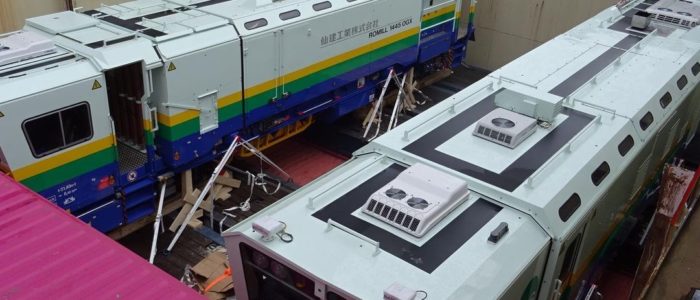
Transporting Railcars And Railroad Tampers By Sea
Railcars and railroad construction cars are shipped internationally on several types of ships such as breakbulk carriers, RO/RO carriers and containerships. Breakbulk ships lift the railcars from the pier into the hold with ship’s onboard gear. RO/RO carriers load the equipment on rolling mafi platforms that get towed into the hold via the ships massive ramp. Containerships utilize flat rack containers which are containers with no sides and no roof, designed to carry oversized equipment. The loaded flat racks are lifted on board ships with dockside gantry cranes. Lifting and securing these heavy units is planned with the use of engineering drawings that take into account center of gravity, lifting angles and lashing points. The upcoming Texas and California high speed rail projects will involve these types of shipments.
(Photo credit: ocean_network_express via Instagram: “Special cargo shipment from Europe to Japan”)
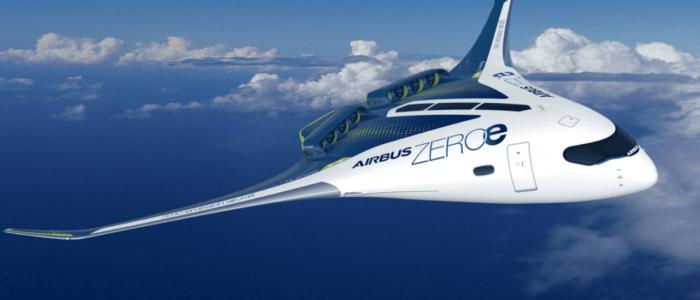
Airbus Aims To Be First To Market With Zero-Emissions Aircraft
European aircraft manufacturer, Airbus, has developed several concept designs for zero-emission commercial aircraft powered by hydrogen. The concept designs are codenamed ZEROe. According to IATA, commercial aircraft produce up to 3 percent of worldwide carbon emissions. The industry has set ambitious goals to reduce the impact of commercial aviation on climate change such as a 50% reduction of carbon emissions by 2050. The zero-emission aircraft are likely to revolutionize the air transport industry.
Read about these concept aircraft at:
https://www.aviationtoday.com/2020/09/23/new-zero-emission-commercial-aircraft-designs-unveiled-airbus/
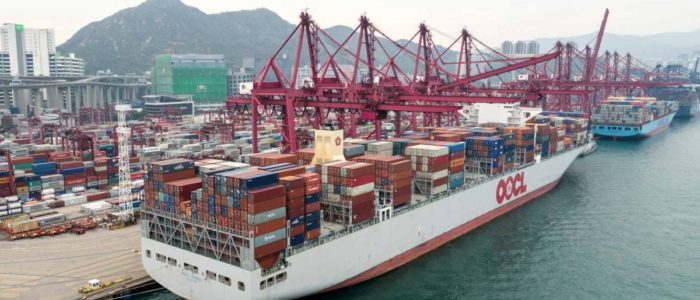
Sky High Ocean Freight Rates From Asia Attract Government Scrutiny
Ocean carriers have been skipping sailings to shore up their bottom line during the virus-induced downturn in manufacturing and consumer demand. Tactical blank sailings combined with record breaking rate spikes in the trans-Pacific trade have increased carrier profitability now that manufacturing and demand are coming back online. Decreased capacity and increased rates are helping ocean carriers recover at the expense of the global economy while suppliers struggle to meet pent up consumer demand. Government regulators have begun to exert pressure on ocean carriers to restore capacity and restrict rate increases. It has been customary to blank sailings during the Chinese Golden Week holiday, however the threat of intervention will surely impact carrier cost manipulations and capacity decisions.
Read more about this trend at:
https://www.freightwaves.com/news/red-hot-ocean-rates-could-spark-government-intervention
(Photo credit: OOCL)
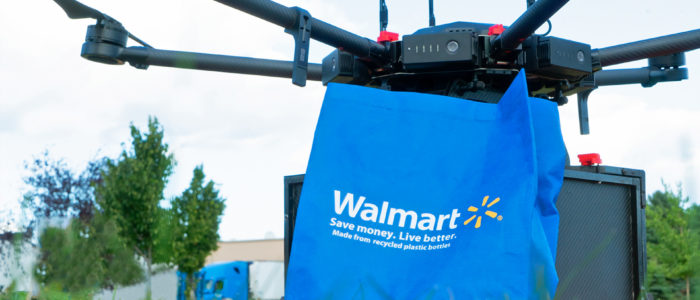
Walmart And Amazon Drones Battle For Last-Mile Delivery Supremacy
Walmart and Amazon are engaged in a war of delivery drones. Although Amazon may be the largest e-commerce retailer, Walmart may have a structural edge enabling them to deliver groceries and household items by drone more quickly. Both players introduced short-range drones to transport small packages up to 5 pounds. According to Amazon, about 90% of products they sell weigh under 5 pounds.
Walmart claims they have a store within 10 miles of 90% of Americans. Amazon, by contrast, delivers from its fulfillment centers, usually located near major cities. That gives Walmart an edge until Amazon ramps up their rural presence.
Meanwhile, Amazon has patented a futuristic Jetson-style idea for distribution towers that look like beehives. The towers would function as fulfillment centers with landing pads for delivery drones, strategically located near high-density residential towers.
The current need for social distancing has accelerated a paradigm shift from brick-and-mortar stores to online shopping with contact-free delivery.
Read more about the drone war between Walmart and Amazon at:
https://www.freightwaves.com/news/walmart-pilots-drones-to-fly-items-to-consumers-doorsteps
& https://www.freightwaves.com/news/amazon-now-authorized-to-fly-commercial-delivery-drones
(Photo credit: Amazon, via FreightWaves, and Walmart, via FreightWaves)
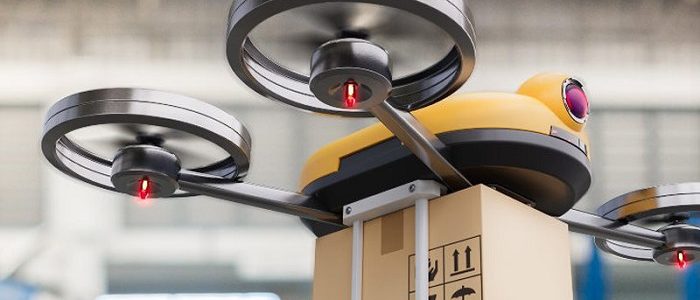
Drone Delivery System Aims to Make Mid-Size Retail Chains Competitive With E-Commerce Giants
Deuce Drone announced a test of their last mile delivery system which is intended to make delivery directly from stores to consumers faster and more affordable. Rouses Market, which operates 64 grocery stores in the south, has partnered with Deuce Drone to test a same day delivery system by drones in order to make last mile delivery faster and less costly than vans, so they can compete with Amazon.
Read more at:
https://www.supermarketnews.com/online-retail/rouses-markets-pilot-drone-delivery-groceries
(Image courtesy of: Commercial Drone Professional of Deuce Drone)
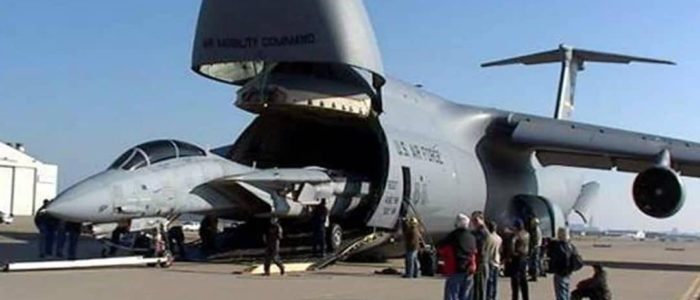
Galaxy C5 Cargo Aircraft Transports Massive Military Equipment
The US Air Force uses one of the largest aircraft in the world for intercontinental transport of massive pieces of military equipment such as jet fighters, helicopters, tanks and trailers. The only aircraft that rivals the Galaxy’s airlift capacity is the Russian Antonov which is chartered out for civilian transport of oversize cargo that cannot fit on conventional freighter aircraft. Although the Antonov carries more cargo, the Galaxy has more modern avionics and aerial refueling capacity.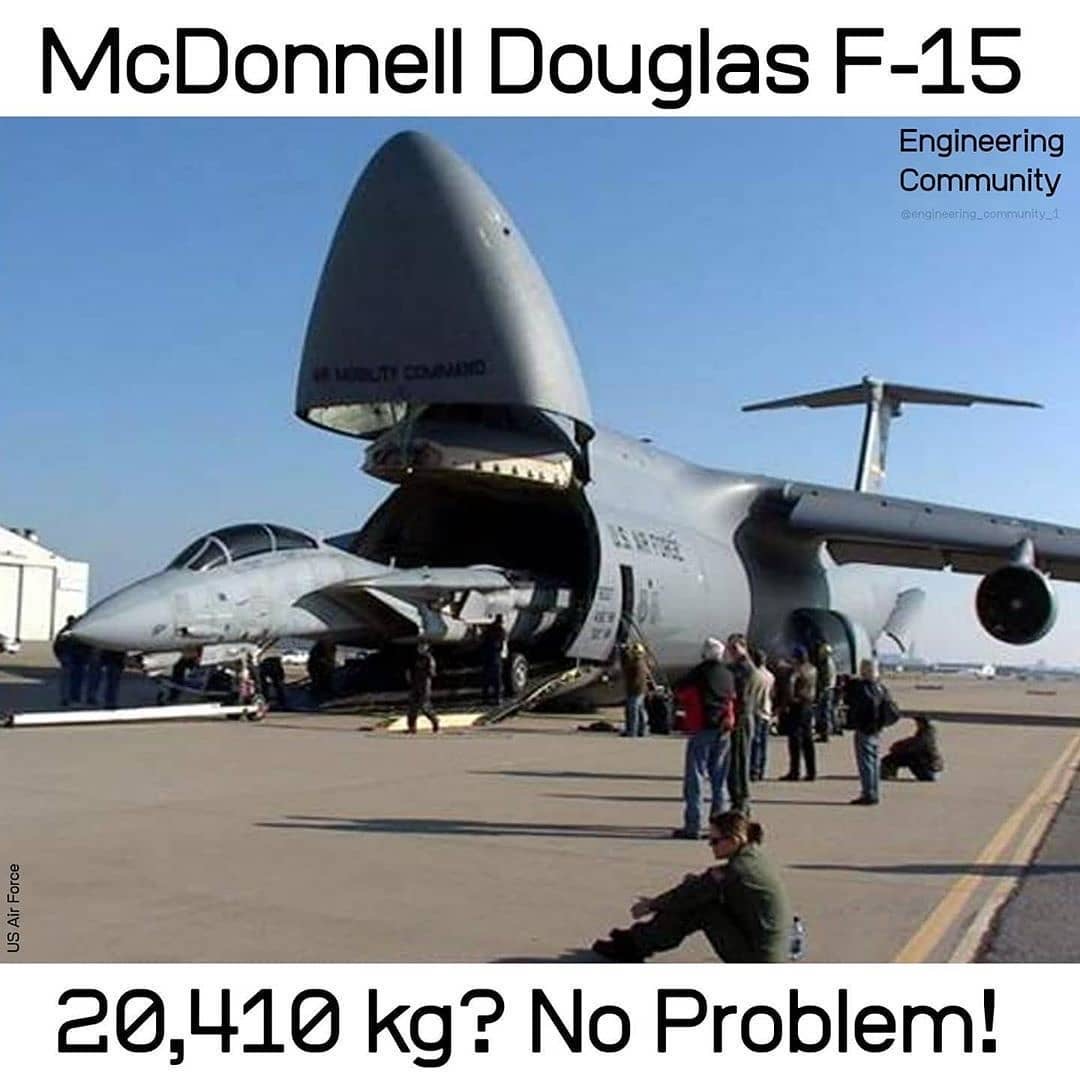
(Photos from @aero.sonicboom on Instagram)

Transporting Large Animals Internationally
Bei Bei, a large panda, was flown from the US to China aboard a FedEx freighter aircraft. Bei Bei’s 16 hour flight from the US to China was made in a purpose built crate. Before transport, Bei Bei was encouraged to play in the crate so that the trip would be made in an environment he was comfortable in. The crate included his favorite snacks – bamboo, apples and pears, biscuits, sweet potatoes and as much water as he could drink.
Read more about transporting large animals internationally at: https://www.ttnews.com/articles/moving-manatees-elephants-and-pandas-requires-careful-planning-preparation
(Photo Credit: Bei Bei by FedEx)
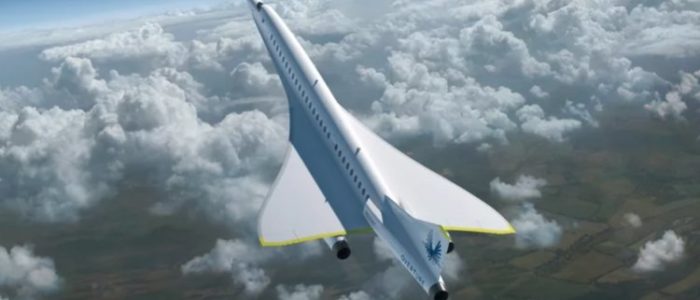
The Future Of Environmentally Sustainable Supersonic Air Travel And Time-Critical Air Freight Is At Our Doorstep
Boom Technology, a US-based supersonic transport startup, is developing a supersonic jet in partnership with Japan Airlines that will fly from NY to London in less than 3.5 hours. The new jet, named Overture, is expected to be in service for passenger flights as soon as 2025-2027. The reappearance of supersonic jets has the potential to transform the marketplace for time-critical air freight carriers and for courier giants such as Fedex and DHL, by reducing the transit time as well as the environmental impact of freighter aircraft. Boom Technology is exploring ways to improve on the Concord jet by using a new technology being developed by Prometheus, for producing aviation fuel which is converted from CO2 emissions in the atmosphere into liquid hydrocarbon and then transformed into aviation fuel. As a result of developments in propulsion technologies, the new jet is expected to fly at speeds in excess of Mach 2.2 without the use of afterburners, reducing the noise level and environmental damage associated with the first generation of supersonic aviation. Read more about this exciting development here.
